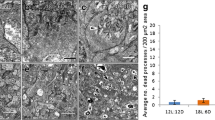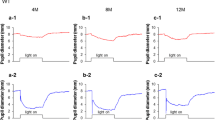Abstract
Background: A solar eclipse was observed in Europe on 11 August 1999. Several individuals suffered from transient or persisting retinal damage, caused by gazing at the eclipse without adequate eye protection. Retinal damage is the most serious hazard of exposure to light, but the mechanisms by which this type of exposure produces retinal damage and its cellular correlates are not yet established. We used an animal model to monitor the mechanisms of retinal damage following excessive light exposure, and in particular to study whether observation of the eclipse induces death of retinal cells. Methods: In the geographic area where the experiment was conducted, a partial (90%) solar eclipse was observed. Experimental albino rats were exposed to these eclipse conditions, and control rats were exposed to normal sunlight. Another group of control animals was exposed to the same conditions, but was provided with protective light filters of the type recommended for human use. The DNA fragmentation in retinal sections of the various groups was analysed by terminal deoxynucleotidyl-transferase-mediated dUTP nick-end labelling. This analysis revealed that exposure to both normal sunlight and to the eclipse resulted in neuronal apoptosis. Immunohistochemical techniques were used to evaluate possible glial-vascular alterations. Results: Dying cells could first be detected 24 h after exposure, the largest number of which were found 6 days later in the photoreceptor layer. Control levels were attained 14 days after the exposure. Retinal ganglion cells underwent apoptosis in both groups (normal sunlight and eclipse exposure), whereas in the neuroglial cells there was an up-regulation of the intermediate filament content. The number of dying cells in both groups was greater in animals whose pupils had been dilated pharmacologically during exposure. On the other hand, the protective filters were effective in preserving the rat retinal cells from apoptosis. Conclusions: These results show, for the first time, that the cellular correlates of solar retinopathy are neuronal apoptosis accompanied by glio-vascular responses. Cellular apoptosis is an irreversible process, which could manifest itself as permanent visual impairment. The activation of non-neuronal cells, such as glial and endothelial cells, could be responsible for the more transient clinical symptoms.
Similar content being viewed by others
Author information
Authors and Affiliations
Additional information
Electronic Publication
Rights and permissions
About this article
Cite this article
Thanos, S., Heiduschka, P. & Romann, I. Exposure to a solar eclipse causes neuronal death in the retina. Graefe's Arch Clin Exp Ophthalmol 239, 794–800 (2001). https://doi.org/10.1007/s004170100362
Received:
Revised:
Accepted:
Published:
Issue Date:
DOI: https://doi.org/10.1007/s004170100362




